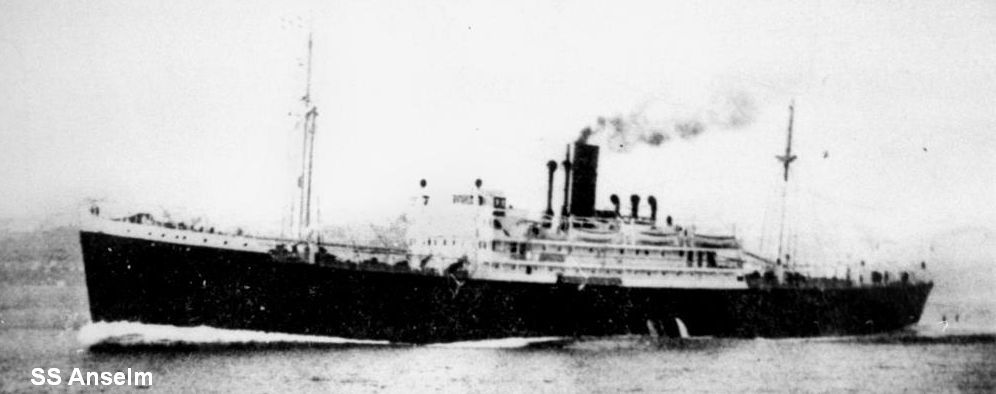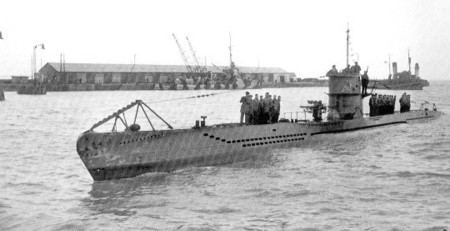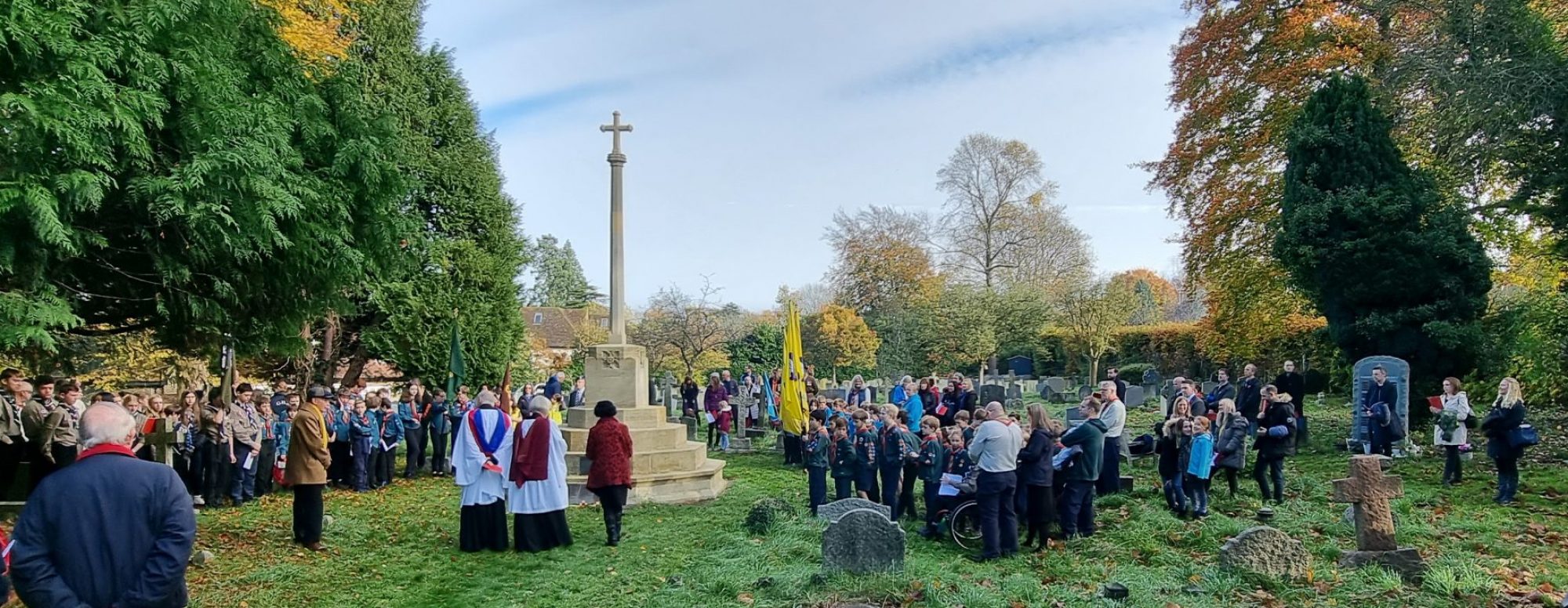
Leading Aircraftman Charles Lewis Woods, died on 5th July 1941, aged 24
Born in Hackney in the Second Quarter of 1917, he was the son of Alfred George and Mary Woods, of 1 Merrow Siding Cottages, Merrow. His father was a brickmaker at the small brick works on Lord Onslow’s Clandon estate. Charles and his parents are recorded as living at that address in the Electoral Register for 1938, as are also his brother Arthur Leonard and his sister Hilda May.
Charles joined the RAF and was a motor transport mechanic. As recorded on his Death Certificate, he was killed at sea on 5th July 1941 when the ship he was travelling in to West Africa, S.S. Anselm, pictured above, was sunk by enemy action. The Death Certificate wrongly gives his age as 26. His name is included on the RAF Memorial at Runnymede.
The circumstances of his death have been investigated and are set out in the accompanying note which recounts the tragedy of the sinking and the heroism of one of those who died.
Charles Woods was aboard the troopship SS Anselm which was part of the Middle East Troop Convoy WS9B and was carrying over 1,200 Service personnel, The WS series convoys, all convoys from the UK to the Middle East, were nicknamed “Winston’s Specials’ and ran regularly between June 1940 and August 1943. Further information on the passage of Convoy WS9B can be found in the Public Records Office documents ADM199/402, 199/410 and 1138. The convoy was carrying RAF personnel for Takoradi (Gold Coast, now Ghana) and other Service personnel for the Middle East.
An analysis of the attack on SS Anselm, recorded in the Monthly Anti- Submarine Report for September, 1941, states that, immediately preceding the attack, HMS Challenger and the SS Anselm were in line ahead and were being screened by HMS Lavender and HMS Petunia. HMS Starwort, whose Asdic (anti-submarine. detection equipment) was out of order, was stationed astern. The escorts had been keeping listening watch in thick fog, but at 0350 the weather cleared and both ships commenced transmitting. At this time, HMS Lavender and HMS Petunia took up screening positions on either bow of HMS Challenger and commenced a zigzag on a course just east of south at a speed of 11 knots. At 0426, in approximate position 44 30 N, 28 30 W, not far from the Canary Islands, the SS Anselm was struck by a torpedo on her port side amidships. The SS Anselm settled rapidly by the head and sank twenty two minutes after being hit.
All the lifeboats got away with the exception of No 6, which was damaged by the explosion. By skilful manoeuvring, HMS Challenger placed her bow alongside the SS Anselm’s port quarter, and in this manner rescued sixty men. Unfortunately, 254 men, including 175 RAF personnel, lost their lives, but it is probable that many of these were killed by the explosion of the torpedo which struck the ship immediately below the accommodation space.

The War Diary of U96, which was commanded by Kapitanleutnant Heinrich Lehmann-Willenbrock, shows the attack in a slightly different light. U96 observed several shadows coming towards her through the morning mist and dived to make an underwater attack. At 0828 (German Summer Time, GMT + 2 hours) she fired a spread of four torpedoes at the SS Anselm, which she identified as a large merchant vessel, and then watched as one of the torpedoes struck the SS Anselm amidships. The explosion observed by the U-boat was so great that she believed she had hit a munitions room, although there is nothing in the British records to confirm this. U96 then dived deeper to evade the counter-attacks by the Royal Naval escorts. An eyewitness aboard SS Anselm, who at the time of the attack was keeping fit by running around the deck, recounts that from the moment of impact it was a nightmare. “The alarm sounded. By instinct we headed for the lifeboat station. I witnessed chaos and panic beyond anything I could imagine. Despair and hopelessness was written in everybody’s face. I heard screams and howls from guys trapped down below. I watched guys fighting each other, seemingly for no reason at all. The destroyer Challenger nosed in towards the back of the ship, catching Servicemen dropping from the stern. Padre Pugh, the first padre at the RAF Bridgnorth station, was haggling with a couple of erks (airmen) to lower him down so that he could bring solace to the doomed erks trapped below. His last words were “My love of God is greater than my fear of death.”
Padre Pugh was subsequently awarded the posthumous George Cross and the citation for the award appears on the Commonwealth War Graves Commission web site. The citation mentions that ‘coming up on deck he seemed to be everywhere at once, doing his best to comfort the injured, helping with the boats, rafts, and visiting different lower sections where men were quartered. When he learned that a number of injured airmen were trapped in the hold which had been damaged by the torpedo, which destroyed the normal means of escape, he insisted in being lowered in by a rope. Everyone demurred. As the hold was below the waterline, the decks were already awash, and to go down was to go to certain death. He simply explained that he must be where his men were. The hold was so full of water that when he knelt to pray, the water reached his shoulders. Within a few minutes the ship plunged, and Father Pugh was never seen again ‘. It would be comforting to think that Charles Woods might have been one of those to whom Padre Pugh brought solace but that of course will never be known.
See also Kenneth Surman

